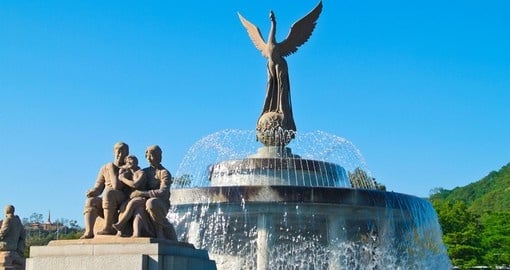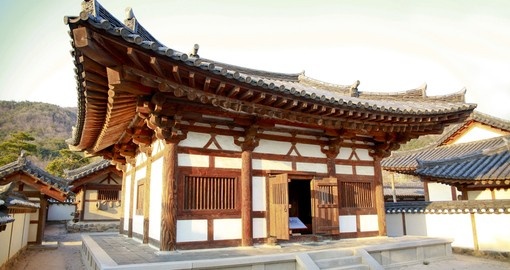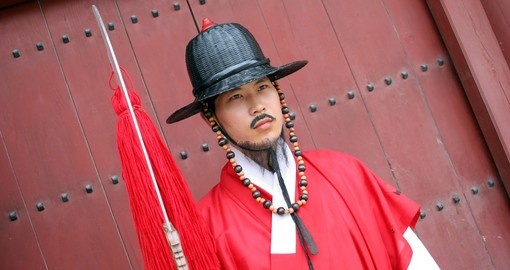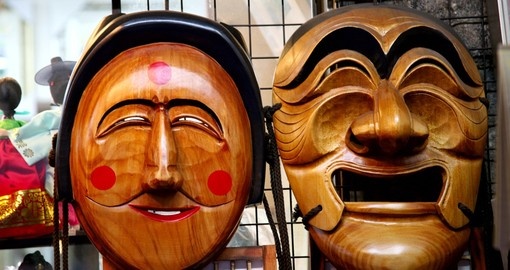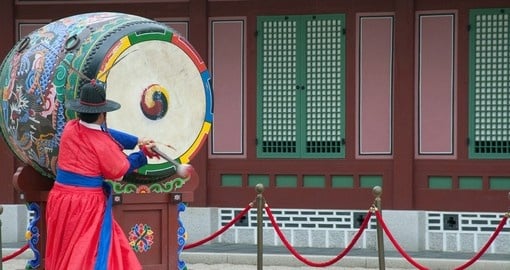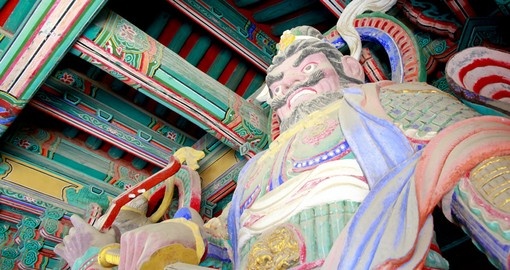Korea History
Archaeological findings on the Korean Peninsula suggest that the first settlements began as early as 700,000 years ago. According to legend, the first Korean Kingdom was not formed until 2,333BC. This kingdom was known as Gojoseon and was established by the mythical figure Dangun, “the grandson of heaven”. During his reign, several tribes moved from Manchuria to the Korean Peninsula.
The Three Kingdoms period in Korean history ran from early in the 4th century AD through to the middle of the 7th century. Three rival kingdoms, Goguryeo, Baekje and Silla were spread around the peninsula as well as part of northeastern Asia. Goguryeo had the largest territory of the three but fell to an alliance of the Silla kingdom and the Tang forces of China in 668AD. Baekje was located in the southwest part of the peninsula and was heavily influenced by Japanese culture. The Silla kingdom was aligned with the Tang Empire of China, however, once all three kingdoms were unified, there was no longer a need for the Tang Empire and they were driven out of Korea.
The Goryeo Dynasty followed the Three Kingdoms and lasted until the end of the 14th century. It was during this time that Buddhism became the state religion and the world’s first moveable type was developed. The Joseon Dynasty succeeded the Goryeo Dynasty and was in place until early in the 20th century. Confucianism became the state ideology and exerted a massive influence. The country suffered invasions at the hands of Japan and China resulting in Korea coming under Chinese control, remaining a Chinese satellite for two hundred years.
Beginning in 1876, the Joseon Dynasty was forced to have an open-door policy with Japan resulting in annexation and a period of Japanese colonialism from 1910 until 1945. By the end of the Second World War Japan was stripped of all colonial territories and the Korean Peninsula was split into North and South along the 38th parallel, under temporary military rule by US and Soviet armies. The North formed a Provisional People’s Committee for North Korea led by Kim II-Sung in February 1948, while the South formed the Democratic People’s Republic of Korea in September of the same year.
There was violence between the North and the South following the split and eventually, war broke out. The war escalated on 25 June 1950 when North Korean forces invaded the South. As over sixteen countries came to the aid of South Korea through General Douglas MacArthur and the UN, China and the Soviet Union lent support to the North, marking the first significant conflict of the Cold War. The war waged on for three years until 27 July 1953 when a peace agreement was signed in the Korean Demilitarized Zone (DMZ) a fortified buffer zone between the two Korean nations. The Korean War had a profound affect on both nations making unification a difficult task.
Before the 1980s, South Korea was governed by a series of dictators who ruled with an iron fist. The Roh Tae-woo government came into power in 1987 and things began to change. South Korea hosted the 1988 Summer Olympic Games in Seoul and joined the UN in 1991. In 1998, Kim Dae-Jung was elected president and won the Nobel Peace Prize for the Sunshine Policy which saw greater political contact between the North and South as well as two summit meetings and brief contact between separated families.
South Korea co-hosted the 2002 World Cup with Japan and in 2003, the Roh Moo-hyun Administration took power. This government urged the growth of civil society and the second round of summit talks happened. President Lee Myung-bak took office in 2008 and pursued change. Although there have been some violent attacks in recent years, the North and South have continued efforts toward peaceful coexistence and even a possible reunification in the future.
Korea Travel Information
At Goway we believe that a well-informed traveller is a safer traveller. With this in mind, we have compiled an easy-to-navigate travel information section dedicated to Korea.
Learn about the history and culture of Korea, the must-try food and drink, and what to pack in your suitcase. Read about Korea's nature and wildlife, weather and geography, along with 'Country Quickfacts' compiled by our travel experts. Our globetrotting tips and visa and health information will help ensure you're properly prepared for a safe and enjoyable trip. The only way you could possibly learn more is by embarking on your journey and discovering Korea for yourself. Start exploring… book one of our Korea tours today!
Extend Your Trip
After your Korea tour, consider taking the time to visit other destinations. Goway offers exciting China vacation packages, India tours and Thailand vacation packages plus a comprehensive selection of vacation packages in many other Asian countries.
Book your Korea tour with Goway!
 ASIA by Goway is an exclusive division that specializes in planning and organizing Korea tours, vacations and experiences. Choose from a simple city stopover, a independent travel module, and much more. We want to be your first choice when next you go globetrotting to Korea.
ASIA by Goway is an exclusive division that specializes in planning and organizing Korea tours, vacations and experiences. Choose from a simple city stopover, a independent travel module, and much more. We want to be your first choice when next you go globetrotting to Korea.
Get a Trip Quote Order a Brochure






